Wow! That picture is crazy. It actually looks pretty bad ass with the binding and scallops. Thanks alot for the help everyone, and thanks for the welcome. If I get a CS built you guys will be the first to see it.
Announcement
Collapse
No announcement yet.
Fretboard Scalloping
Collapse
X
-
I was just curious, not sceptical. The scalloping is not very deep (unlike in the new Yngwie strat), but of course the neck is thinner.Originally posted by Nazgul View PostNot a soloist, but here's a Jackson CS RR with binding and scallops:
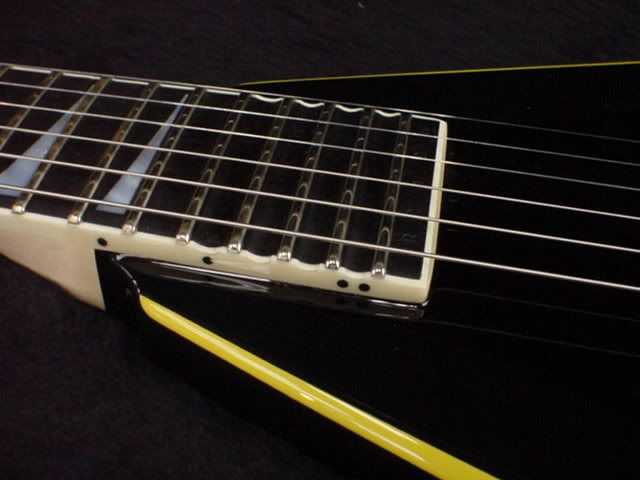
I don't see a reason why this could be a problem...but you made me worry now a little bit - I have a Jackson Stars CS RR on order with binding and some fret scallops...
Comment
-
I have a couple of (small) pics showing how the Jackson Custom Shop is doing a scallop job. It's simply a (skilled) guy with a drilling machine! Lemme see if I can make them available here... brb.
Comment
-
I have never heard of this before until recently when I started to dive further into the luthier world. Whats the purpose of doing this?
2009 Les Paul Kit - GFS Dream 90 (N), SD Seth Lover (B)
2009 Gibson Les Paul Worn Brown
2009 Epiphone Studio Deluxe
2008 Epiphone Custom - SD P-Rail(N), Fat Pat (B)
2008 Ovation Celebrity CC48
2007 Agile AL3000 - SD Alinco II set
2005 Epiphone Standard - SD Pearly Gate (N),SD Alinco II (B)
2004 Epiphone Custom Plus Top
2004 Gibson SG Faded - Stock
1997 Epiphone Slash Snakepit
1995 Fender Strat - SD Lil 59' Bridge, SD Hotrail Middle, Stock Neck
Comment
-
Exceptional control of vibrato.
Comment
-
The Jackson Custom Shop will do scalloped fretboards with or without binding. Here is my 89 Rhoads with factory scalloped 12-22 frets:
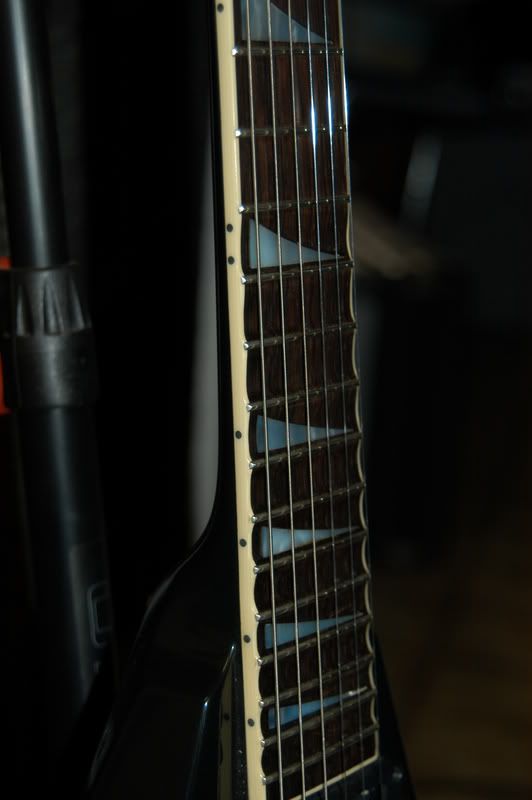
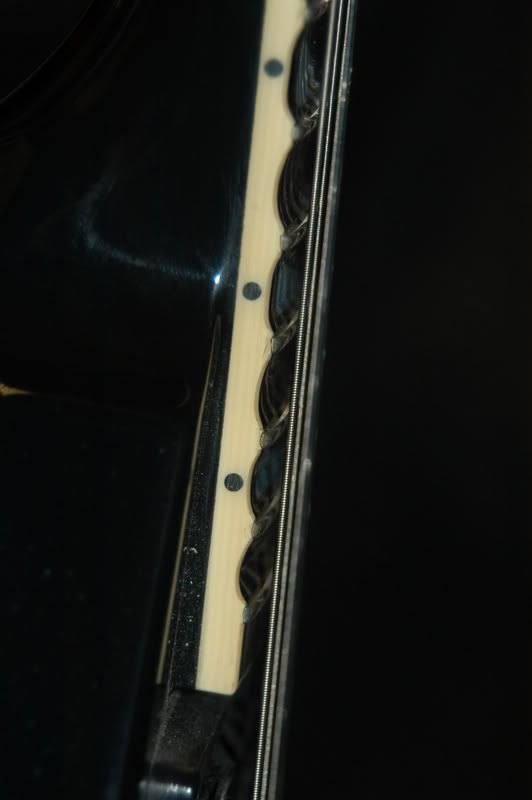
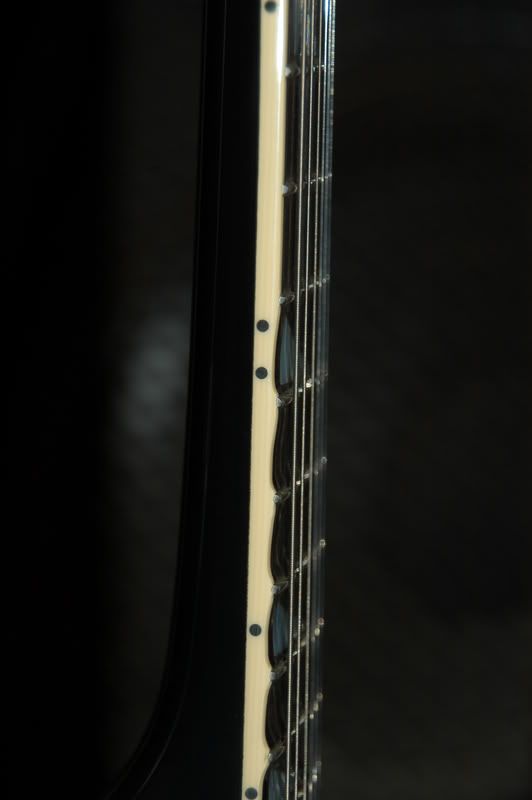
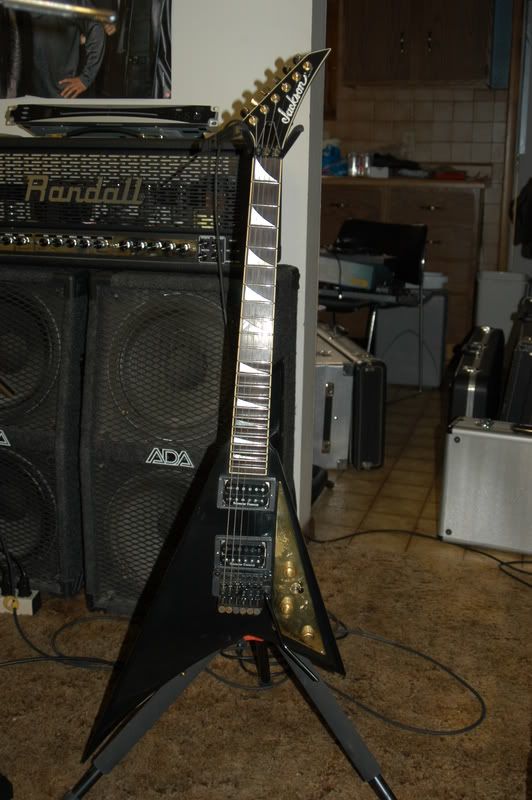
Rudy
Rudy
www.metalinc.net
Comment
-
I did this myself. LTD H207. many assorted files, different grades of sandpaper, tons of masking tape, and plenty of time and patience.
These photos don't really answer your question in regards to what the custom shop will do, but it shows that it's possible to do even with binding. This board is rosewood though, which I think is probably softer and easier to work with.
Here's how i did mine -
frets 1-3 Sandpapered
frets 4-9 light on the bass, medium on the treble
frets 10-24, medium-heavy on the bass, heavy on the treble.
Of course, all the transitions from light to heavy are gradual and smooth. I don't see the value of scalloping some of the more "rhythm" areas of the neck; however, i wanted a uniform finish on the wood. I didn't want it to look like some spots received a manufacturing process, while the others didn't. That would have been visually distracting to me. If I didn't file them down, I probably still would have sandpapered the finish off.
Anyway, see if the CS will do some transitional-type of scalloping for you even if you're not interested in it personally. Then tell us what they say If we're selling organs to pay for gear, they should give us more options
If we're selling organs to pay for gear, they should give us more options 
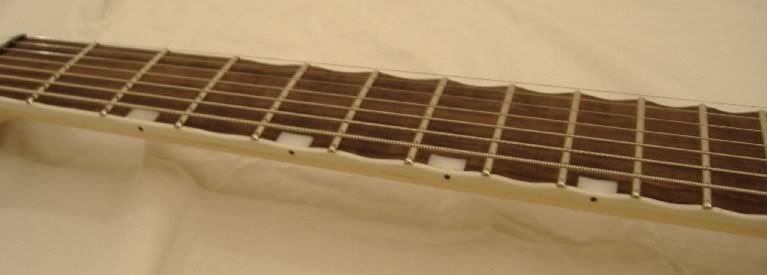


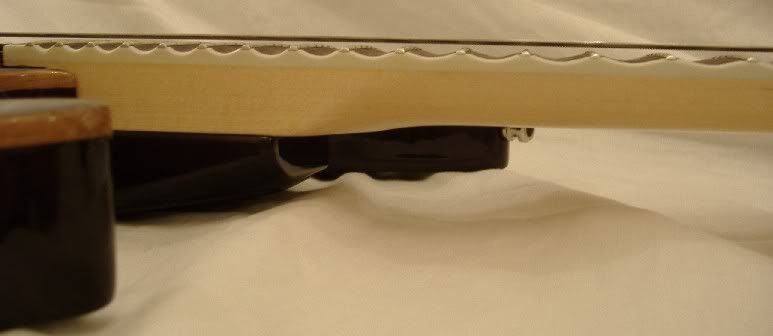 Last edited by Oogadee Boogadee; 09-09-2007, 09:24 PM.
Last edited by Oogadee Boogadee; 09-09-2007, 09:24 PM.
Comment
-
OB, that looks like an impressive job. Knowing how difficult it can be to get it uniform - I'll have to praise you for that.
Comment
-
Thanks! Here's more - my KV3. I didn't loose a single fin. The good thing about going easier on the bass side is that, with standard sharkies, you're leaving the meaty end of the inlay untouched. And the area that you're scalloping deeper is an area mostly of wood, since the pointy part of the inlay is off-center, nearest the actual fret wire.
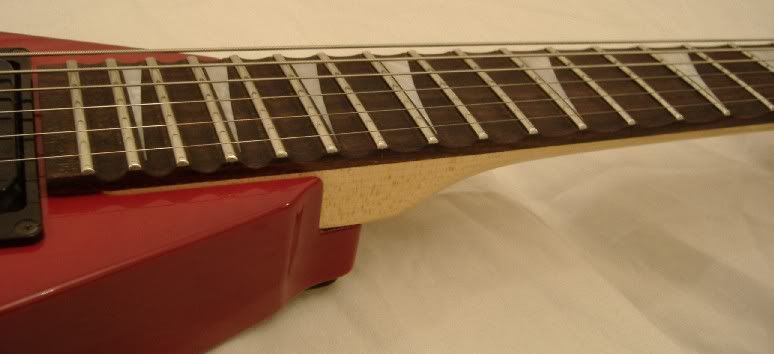
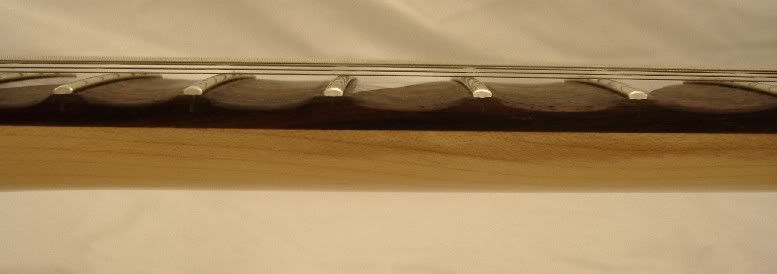
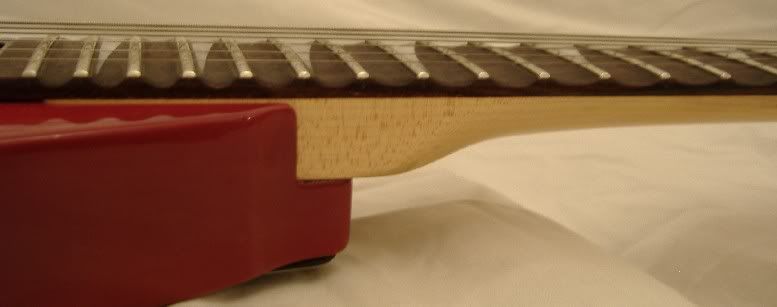
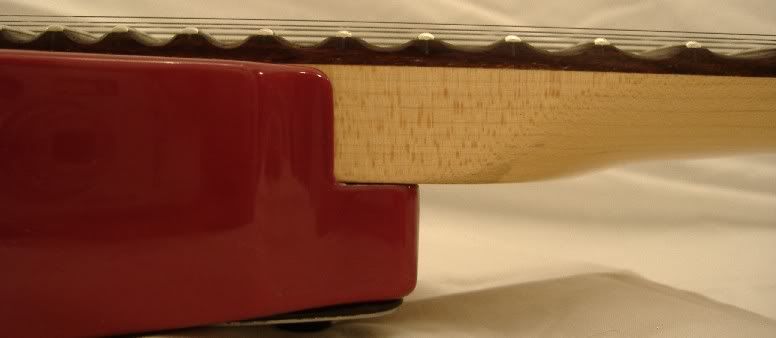
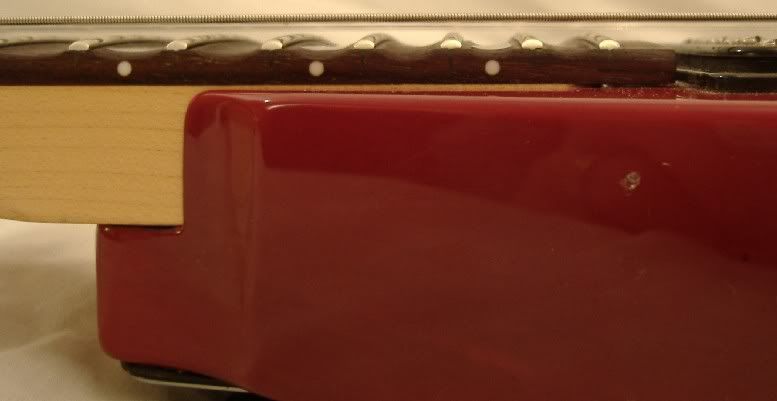
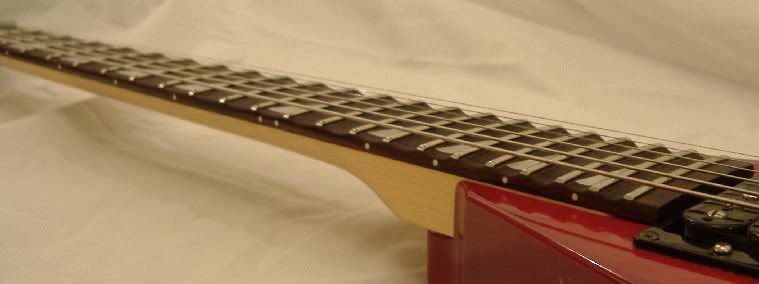


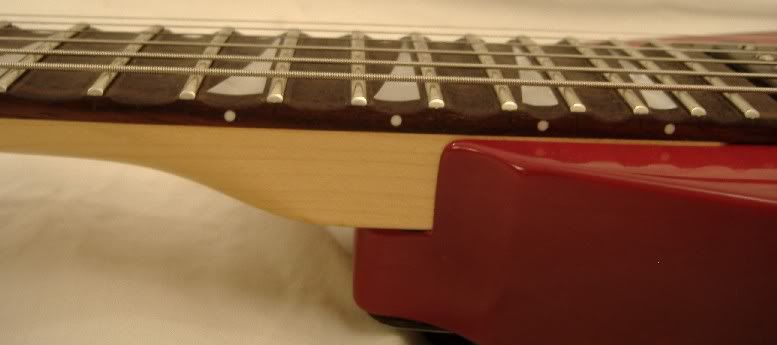

Comment
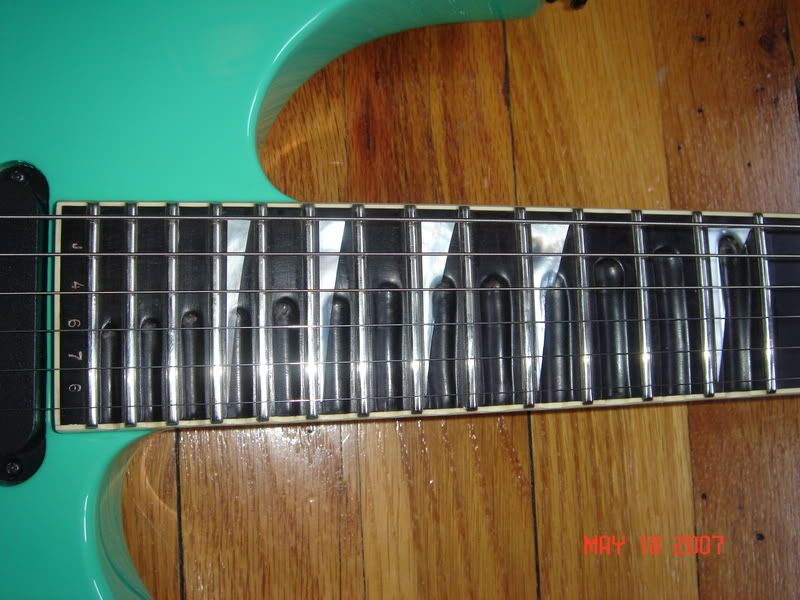
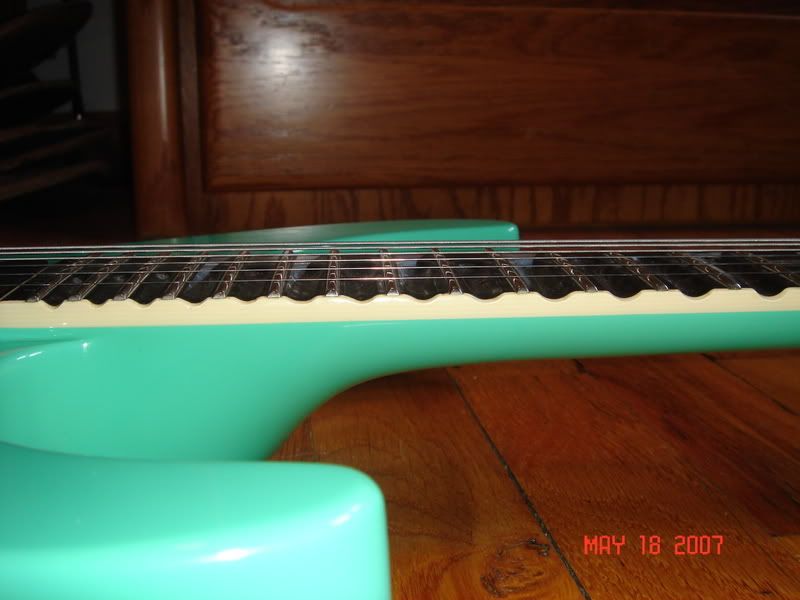

 I'vebeenhad's have Shark Tooth inlays.
I'vebeenhad's have Shark Tooth inlays.








Comment